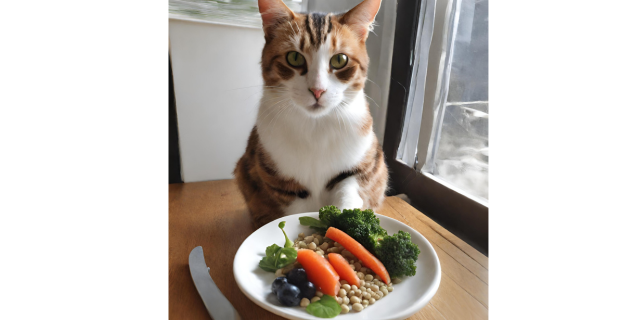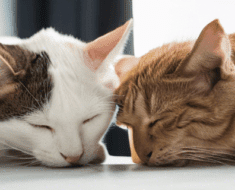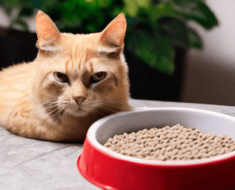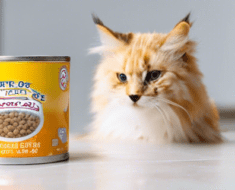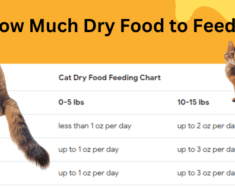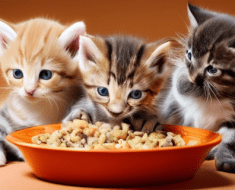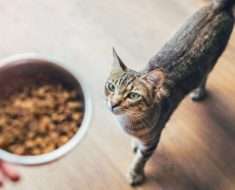A raw diet can be good for cats if balanced properly with essential nutrients. However, consult a veterinarian before making any dietary changes for your pet.
Introducing a raw diet for your feline companion can have potential benefits as well as risks. Cats are obligate carnivores, and a raw diet may align with their natural dietary preferences. Proponents believe that raw diets can lead to shinier coats, healthier skin, and improved digestion for cats.
However, it is essential to ensure that the diet is nutritionally complete to prevent deficiencies. Consulting with a veterinarian or a pet nutritionist is recommended to determine the best approach for your cat’s specific needs.
The Raw Diet
Cats are obligate carnivores, which means their diet should be primarily meat-based. The raw diet for cats focuses on feeding them uncooked meat, bones, and organs, mimicking what they would eat in the wild.
What Is A Raw Diet For Cats?
A raw diet for cats consists of raw meat, bones, and organs without any added preservatives or fillers. It aims to give cats the nutrients they need for optimal health and well-being.
Benefits Of A Raw Diet
- Improved digestion and nutrient absorption
- Healthier skin and coat
- Enhanced dental health
- Increased energy levels
- Stronger immune system
Feeding your cat a raw diet can help address many health issues and promote their overall vitality. Always consult with your vet before making any significant changes to your cat’s diet.
Nutritional Needs
Cats have unique nutritional needs, and a raw diet can be beneficial for their overall health. This type of diet provides essential nutrients and mimics their natural eating habits, promoting a shiny coat and optimal weight management. It is important to consult with a veterinarian before making any significant changes to a cat’s diet.
Understanding A Cat’s Nutritional Requirements
Cats have unique nutritional needs that must be met through their diet. Understanding what these requirements are is essential in providing your feline friend with a well-balanced and healthy diet.
Comparison With Commercial Cat Food
When comparing a raw diet for cats with commercial cat food, it’s important to consider the nutritional content and quality of the ingredients used. Raw diets are often believed to be more natural and closer to what cats would eat in the wild, providing them with essential nutrients in their most natural form.
On the other hand, commercial cat food can offer convenience and balance in meeting a cat’s dietary requirements, but some may contain fillers and artificial ingredients that may not align with a cat’s natural diet.
Health Benefits
Switching your cat to a raw diet can offer a range of health benefits. This natural diet can support improved digestion, promote a healthy coat and skin, and aid in weight management.
Improved Digestion
A raw diet for cats can lead to improved digestion due to its high moisture content and easily digestible proteins. This can reduce the risk of digestive issues and improve overall gut health for your feline friend.
Healthy Coat And Skin
Feeding your cat a raw diet can contribute to a lustrous coat and healthy skin. The nutrients found in raw foods, such as essential fatty acids and vitamins, support a soft, shiny coat and can help alleviate skin conditions.
Weight Management
Switching to a raw diet can offer weight management benefits for cats. The natural, balanced nutrition in raw food can help maintain an ideal weight, reducing the risk of obesity and related health issues.
Potential Risks
While a raw diet may offer benefits for cats, potential risks include bacterial contamination, nutrient imbalances, and choking hazards. It is essential to consult with a veterinarian before transitioning your cat to a raw diet to ensure their health and safety.
Bacterial Contamination
A potential risk associated with a raw diet for cats is bacterial contamination. Raw meat, especially poultry and fish, may contain harmful bacteria such as Salmonella or E. coli that can pose a serious health risk to cats.
These bacteria can be harmful not only to your feline friend but also to you and your family. Cats can become carriers of these pathogens, leading to the potential transmission to humans through direct contact.
Unbalanced Nutrition
Another potential risk of feeding your cat a raw diet is the possibility of unbalanced nutrition. While a raw diet may seem natural and healthy, it can be challenging to provide a well-rounded and nutritionally complete diet for your cat.
Cats have specific dietary requirements, including the need for certain vitamins, minerals, and amino acids. Without proper formulation and guidance from a veterinary professional, a raw diet may not fulfill these requirements, leading to nutritional deficiencies or imbalances.
It is important to note that improper nutrition can have serious consequences on your cat’s health, including issues with growth, organ function, and a weakened immune system.
Transitioning To A Raw Diet
Transitioning to a raw diet for your cat can have numerous benefits. However, it’s important to approach this change gradually and with caution to ensure your cat’s health and well-being. Here are some important factors to consider when transitioning your cat to a raw diet.
Gradual Introduction
Introducing a raw diet to your cat should be a slow and gradual process. Start by mixing small amounts of raw food with your cat’s current diet. Over the course of a few weeks, gradually increase the proportion of raw food while decreasing the amount of commercial cat food. This gradual transition can help prevent digestive upset and allow your cat’s system to adjust to the new diet.
Monitoring Your Cat’s Response
Closely monitoring your cat’s response to the new diet is crucial. Keep an eye on your cat’s behavior, appetite, and overall health. Look for any signs of digestive issues, such as vomiting or diarrhea, and make adjustments as needed. Regularly weighing your cat and tracking their progress can also help ensure that they are thriving on their new diet.
Veterinarian Perspective
Professional Opinions On Raw Diets
A raw diet for cats has sparked varied opinions among veterinarians. Some advocate for its benefits, while others raise concerns about potential risks.
Safety Considerations
Veterinarians emphasize the importance of safety when feeding cats a raw diet. Proper handling, balanced nutrition, and regular consultations are crucial. “`
Preparing Raw Meals
Preparing raw meals for your feline friend can be a rewarding and beneficial practice. It gives you full control over your cat’s nutrition and ensures that they get the freshest and most natural ingredients. However, there are a few key considerations to keep in mind when it comes to preparing raw meals for your cat. From selecting quality ingredients to proper handling and storage, let’s explore everything you need to know to provide a balanced and healthy raw diet for your beloved pet.
Selecting Quality Ingredients
When it comes to a raw diet for cats, quality ingredients are essential. By selecting the right ingredients, you can ensure your cat gets all the nutrients for optimal health. Start by choosing lean, boneless meats such as chicken, turkey, or beef. These meats are rich in protein, essential for maintaining strong muscles and healthy bodily functions. Additionally, includes organ meats like liver or heart, which offer vital vitamins and minerals like iron and B vitamins.
It’s also important to include a variety of fruits and vegetables in your cat’s raw diet. These provide essential vitamins, minerals, and antioxidants that support their immune system and overall well-being. However, remember that cats are obligate carnivores, so the majority of their diet should still consist of high-quality animal proteins.
Proper Handling And Storage
Ensuring proper handling and storage of raw ingredients is crucial to prevent any bacterial contamination and to maintain the freshness and nutritional value of your cat’s food. Follow these guidelines to ensure the safety of your pet:
- Start by washing your hands thoroughly before and after handling raw ingredients.
- Use separate cutting boards and utensils for raw meats and other ingredients to reduce the risk of cross-contamination.
- Thaw ingredients safely in the refrigerator or using the defrost setting on your microwave. Avoid leaving them at room temperature for too long, as this can promote bacterial growth.
- If you’re preparing larger quantities, divide the meals into individual portions to freeze separately. This way, you can defrost only what your cat needs for each meal.
- Store raw ingredients and prepared meals in airtight containers in the refrigerator or freezer to maintain quality and prevent spoilage.
By following these simple steps, you can provide your cat with safe and nutritious raw meals to support their overall health.
Frequently Asked Questions For Is A Raw Diet Good For Cats
Is A Raw Diet Good For Cats?
A raw diet can provide essential nutrients, promote dental health, and help maintain a healthy weight for cats.
Can Cats Eat Raw Chicken?
Yes, cats can eat raw chicken. It provides essential proteins and nutrients that are beneficial to their health.
Are There Any Risks With Feeding Cats A Raw Diet?
Feeding cats a raw diet carries the risk of bacterial contamination, nutrient imbalances, and potential feeding difficulties.
What Are The Benefits Of A Raw Diet For Cats?
A raw diet can improve digestion, enhance coat health, increase energy levels, and minimize the risk of allergies in cats.
How Do I Transition My Cat To A Raw Diet?
To transition your cat to a raw diet, gradually introduce raw food by mixing it with their current food and slowly increasing the proportion over time.
Conclusion
A raw diet can provide numerous benefits for your feline friends. However, it’s essential to consult with a veterinarian before making any dietary changes. By understanding your cat’s nutritional needs and considering their health conditions, you can make an informed decision about whether a raw diet is right for them.
Making the best choice for your beloved pet is crucial.
